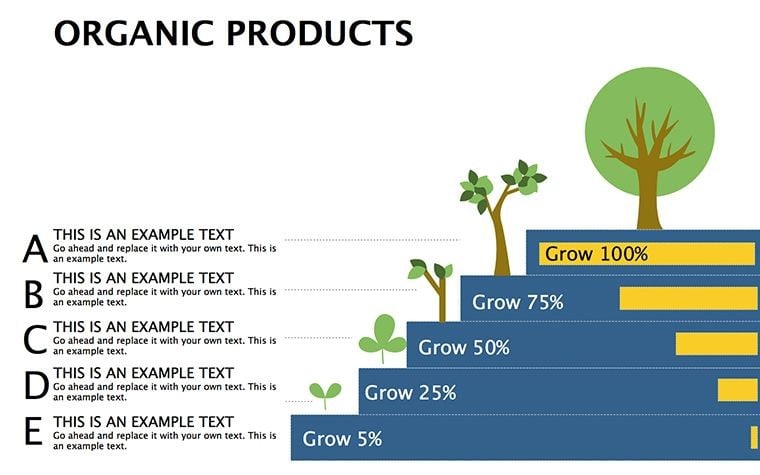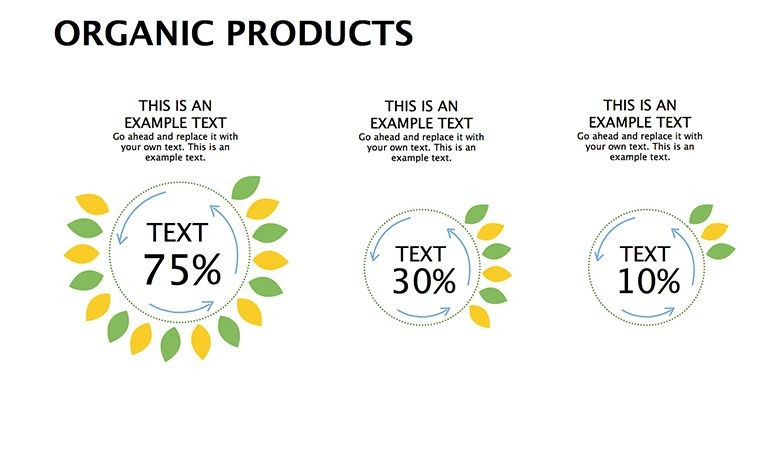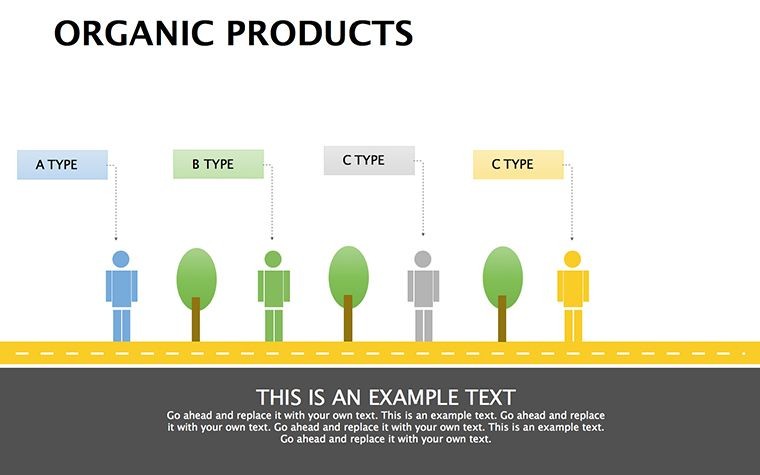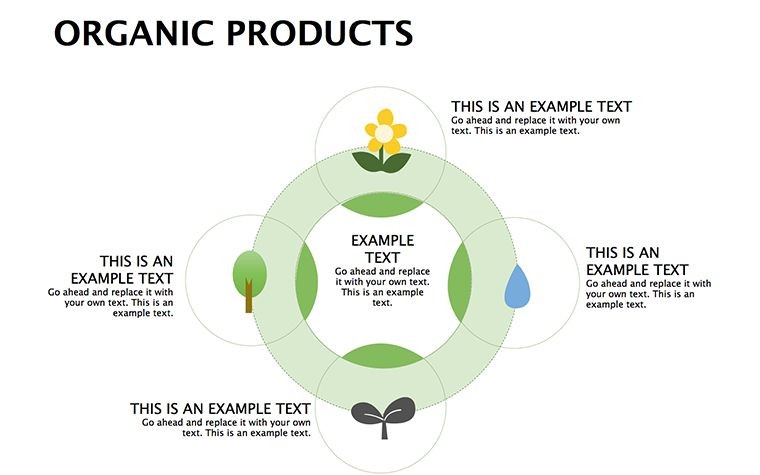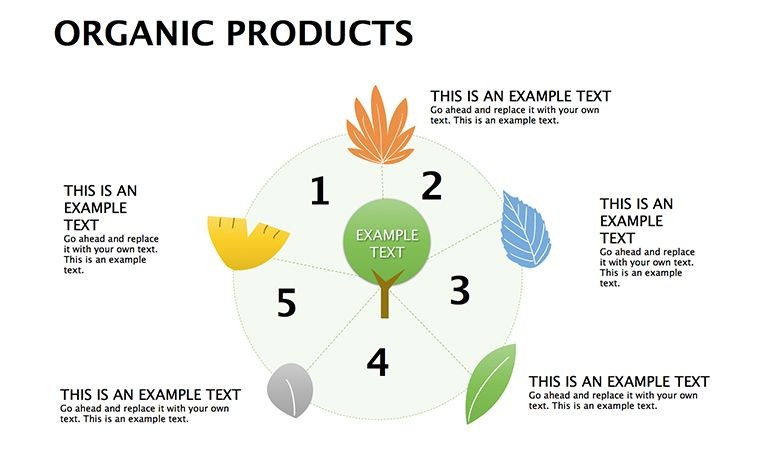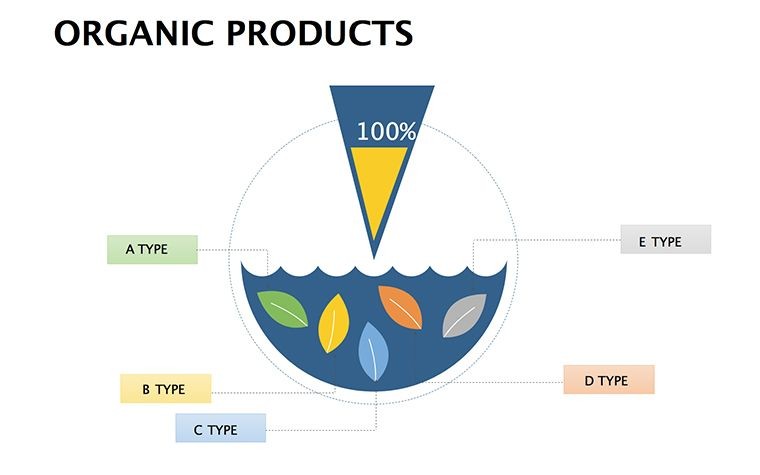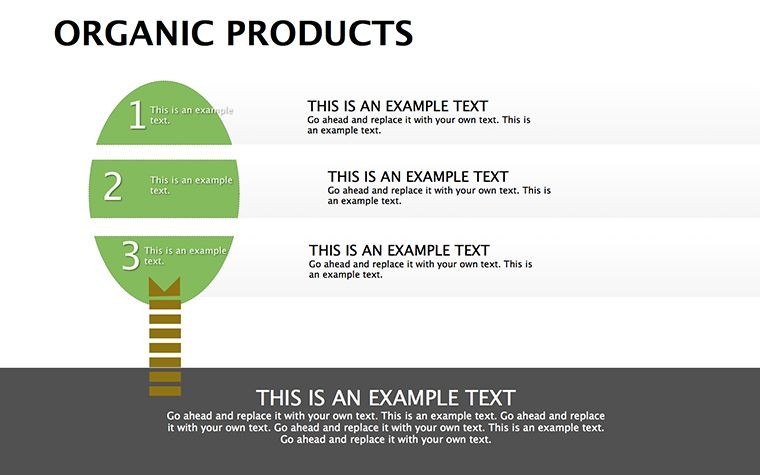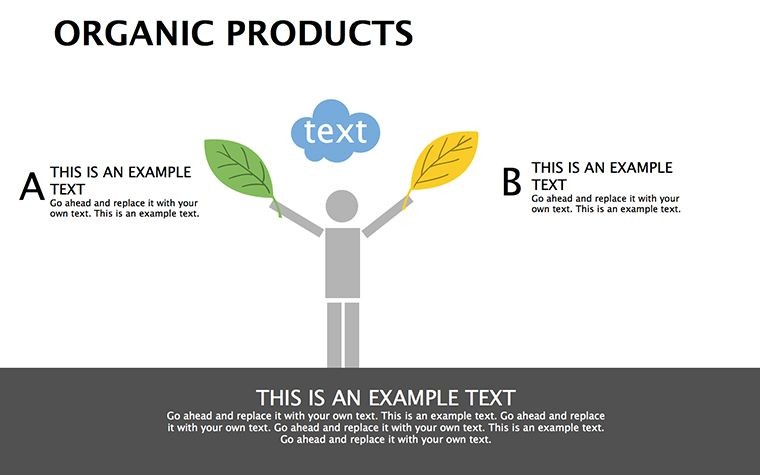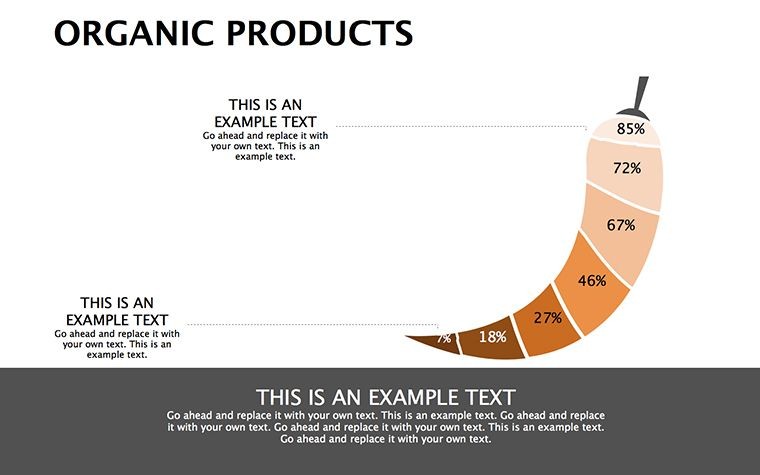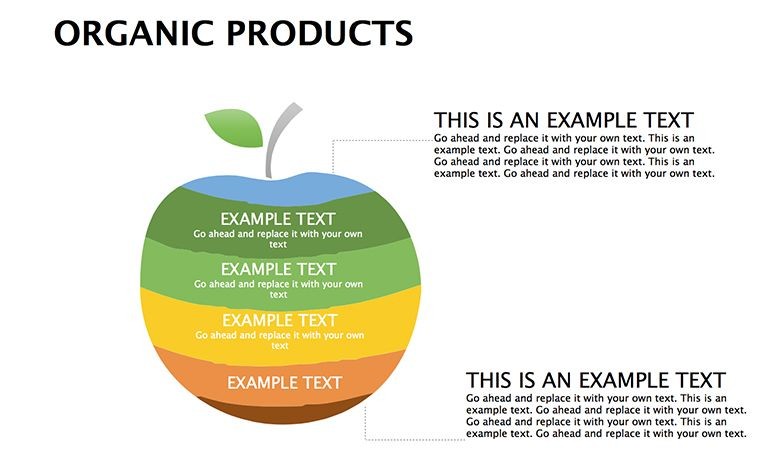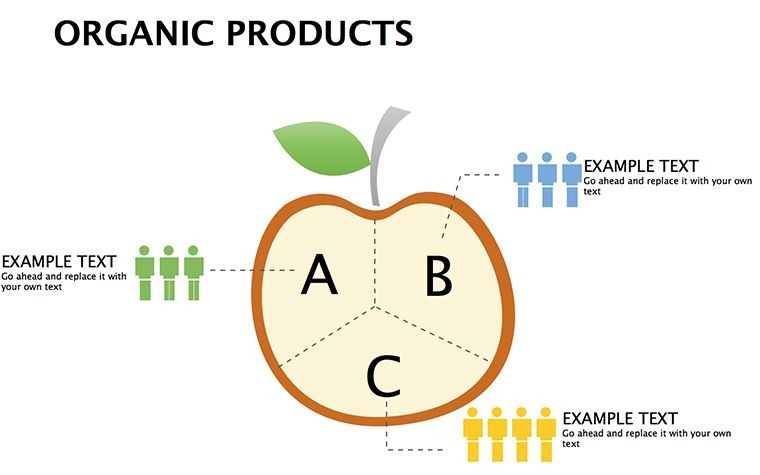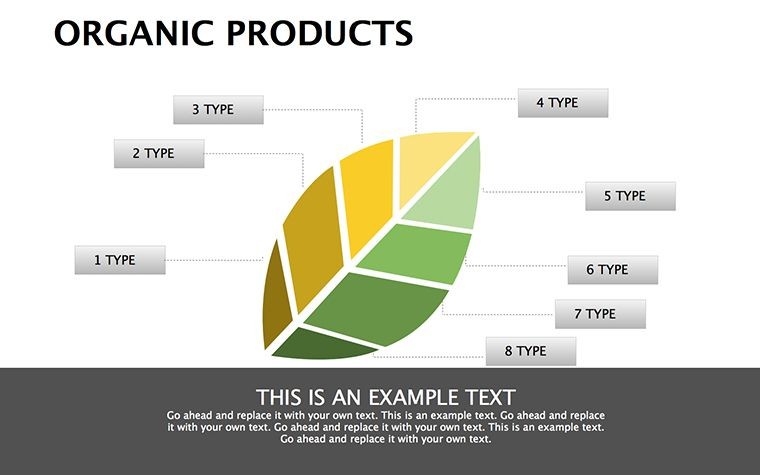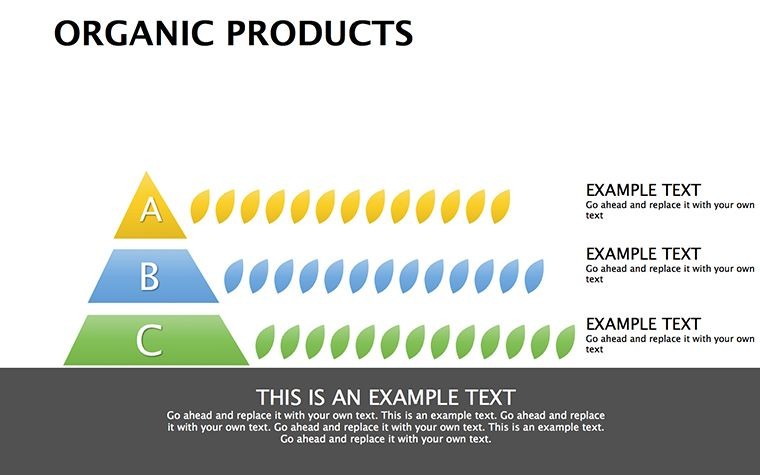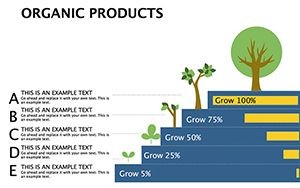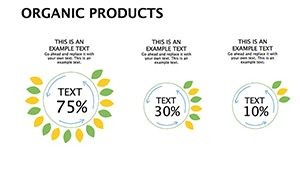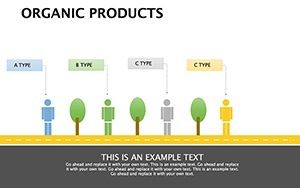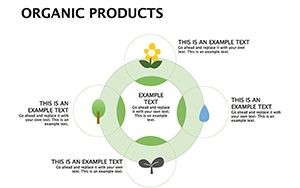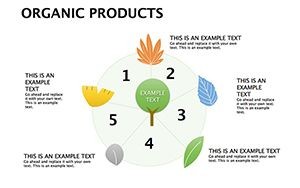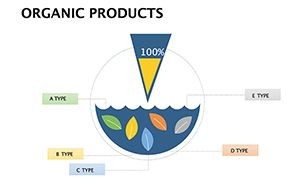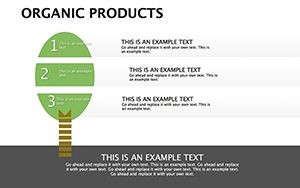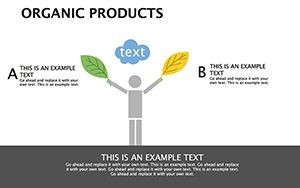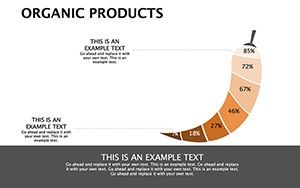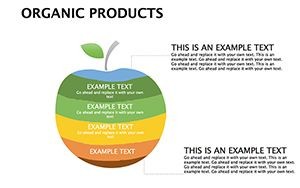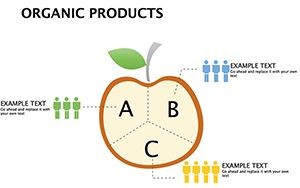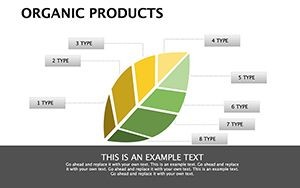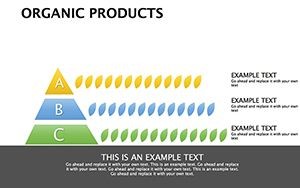Promo code "00LAYOUTS"
Organic Products Keynote Diagrams: Championing Sustainable Choices
Type: Keynote Diagrams template
Category: Relationship
Sources Available: .key
Product ID: KD00197
Template incl.: 13 editable slides
Picture this: You're standing in front of a room full of eco-conscious consumers or industry leaders, and you need to convey the essence of organic products - their purity, the rigorous certification processes, and why they matter in today's world. Our Organic Products Keynote Diagrams template steps in as your ultimate ally, offering 13 meticulously crafted, editable slides that bring these concepts to life through intuitive relationship diagrams. Designed for anyone passionate about sustainability, from food industry professionals to environmental educators, this template helps you illustrate how organic farming avoids chemical fertilizers and ensures product integrity, backed by trusted organizations like the USDA Organic program.
With a focus on building consumer trust, these diagrams aren't just visuals; they're tools for storytelling. Think of transforming a simple pitch into an engaging narrative about the journey from farm to table, highlighting benefits like enhanced taste and health advantages. As seen in case studies from organizations like the Organic Trade Association, such visuals have boosted audience retention by emphasizing verifiable origins, making your presentations not only informative but transformative.
Essential Features for Impactful Presentations
This template shines with its user-friendly features, ensuring you spend less time designing and more time delivering value. Each slide is fully customizable in Apple Keynote, with drag-and-drop elements that adapt to your needs. The relationship diagrams, central to the theme, allow you to map connections between producers, certifiers, and consumers seamlessly.
- Customizable Layouts: Adjust node sizes and links to represent varying certification levels, using icons like leaf motifs for organic seals.
- Thematic Colors: Earthy greens and browns dominate, symbolizing nature, but easily swapped for your branding.
- Data Integration: Embed charts showing growth in organic markets, drawing from real data like Nielsen reports on consumer preferences.
- High-Resolution Assets: Vector graphics maintain quality on large screens, ideal for conferences or webinars.
Compatibility is key - works flawlessly with Keynote on macOS and iOS, and exports to PDF for broader sharing. This setup draws from authoritative sources, like IFOAM standards, to ensure your content reflects global best practices in organic certification.
In-Depth Look at the Slides
Diving into the 13 slides, the structure builds progressively. Slides 1-3 introduce basic relationship maps, perfect for outlining the organic supply chain - from soil health to final product. For example, Slide 2 uses interconnected circles to show how avoiding pesticides links to consumer safety, with editable labels for specific examples like non-GMO verification.
Slides 4-8 delve into certification processes, featuring flowcharts that detail steps from farm inspection to label approval. Imagine customizing Slide 6 to include a case from a real brand like Whole Foods, where diagrams helped explain their organic sourcing, leading to increased sales as per their annual reports.
The latter slides, 9-13, focus on benefits and comparisons. Slide 10, for instance, contrasts organic vs. conventional products in a balanced diagram, highlighting nutritional edges backed by studies from the Journal of Agricultural and Food Chemistry. Each includes subtle animations to reveal layers, enhancing engagement without distraction.
Targeted Use Cases Across Sectors
The versatility of this template extends to various applications. In marketing for organic brands, use it to craft compelling retailer pitches, as demonstrated by successful campaigns from companies like Patagonia, where relationship visuals clarified sustainability commitments.
For educators, these diagrams facilitate classroom discussions on environmental impact, aligning with curricula from bodies like the EPA. A nonprofit might employ them in fundraising, showing donor impact on organic initiatives, with metrics from Charity Navigator underscoring effectiveness.
- Consumer Education Workshops: Break down certification myths, fostering informed choices.
- Business Strategy Sessions: Map market relationships to identify growth opportunities in organics.
- Policy Advocacy: Visualize data for lawmakers, supporting bills like the Farm Bill's organic provisions.
To get started, import your images of certified products and tweak the diagrams accordingly. This approach not only solves common pitch challenges, like explaining complex standards, but also positions you as an expert in sustainable practices.
Pro Tips to Maximize Your Template
From my experience in eco-marketing, keep text concise - aim for bullet points that pop against the natural palette. Incorporate real-time data via hyperlinks to sources like USDA databases for added credibility. For humor's sake, add a light note: "Why go organic? Because who wants their salad with a side of chemicals?" But stay professional, ensuring every edit enhances trustworthiness.
Workflow integration is simple: Duplicate slides for variations, and use Keynote's collaboration tools for team input. This template isn't just about diagrams; it's about sparking change through clear, authoritative visuals.
Start Your Organic Journey Now
Embrace the power of these diagrams to advocate for better choices. Customize today and lead the conversation on sustainability with confidence.
Frequently Asked Questions
- How customizable are the organic diagrams?
- Fully editable in Keynote, from colors to layouts and text.
- Can I use this for PowerPoint presentations?
- Export to .pptx is possible, but best in Keynote for optimal features.
- What file formats are supported?
- .key source file, with easy export options.
- Are there examples for specific industries?
- Yes, adaptable for food, farming, and education sectors.
- Does it include certification icons?
- Yes, pre-included editable icons for major organic seals.
- Is there a trial version?
- No, but previews show all slides before purchase.

